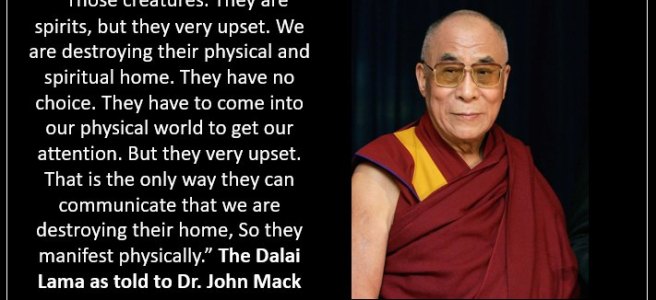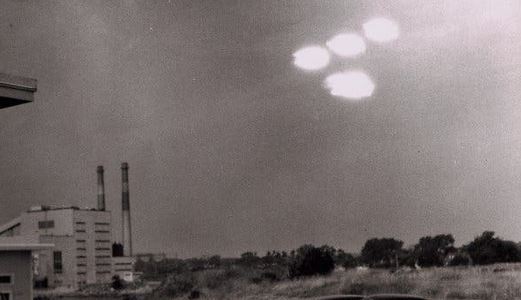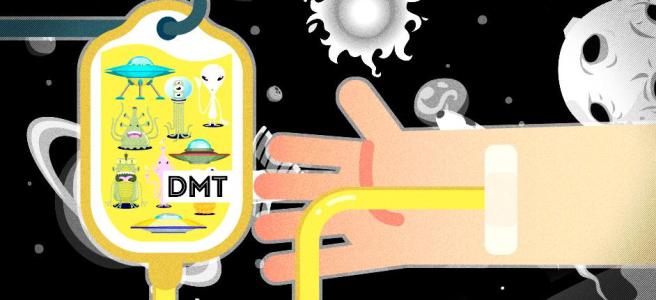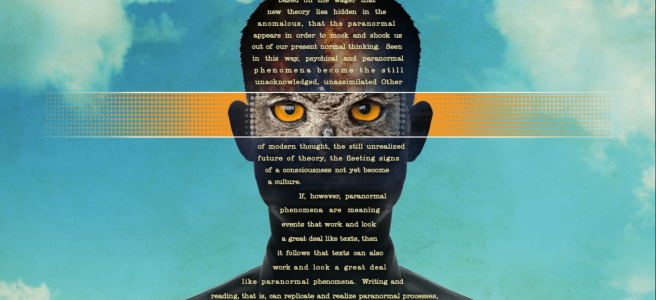A friend recently shared this meme of “What-the-Dalai-Lama-told-John-Mack” (which I haven’t fact-checked), which, along with the recent publication of Diana Pasulka’s Encounters: Experiences with Nonhuman Intelligences prompts this post.
As readers here will know, one engine of thought here at the Skunkworks is the thesis that the very idea of technologically-advanced, extraterrestrial civilizations is ideological, that is, treating a profoundly contingent cultural formation (namely, that of the earth’s so-called “advanced” societies) as if it were somehow natural or universal. The Extraterrestrial Hypothesis (ETH) for the origin of UFOs/AUP merely projects “First World” humanity as a paradigm of “intelligence” and “technology” onto the cosmos.
However, recent reflections on “the Phenomenon,” taking their cue, arguably, from Jacques Vallée’s Passport to Magonia combined, sometimes, with more recent, original research, depart from the conjecture that UFOs/UAP hail from an extrasolar civilization. Following Vallée, it is proposed that the mind-boggling variety of entities encountered in relation to flying saucers, UFOs, and UAP are part of a broader, human tradition of interaction with nonhuman intelligences. As Pasulka writes in the introduction to her new book (in her characteristically breezy style): “Traditional religions, including Christianity, Islam and Judaism, as well as Buddhism, and Hinduism, in addition to Indigenous communities, include some recognition, in parts of their histories and traditions, either acknowledging or pondering the existence of extraterrestrials or nonhuman intelligence, or do not discount it” (8).
In this notion of “nonhuman intelligence” there seems something unreflected, and that is the very (reported) fact of human/nonhuman interaction, an interaction that is more like human-to-human interaction than that between different species. If these entities are not of the family Homo (and even within that family mutual recognition is restricted), then the grounds of the mutual recognition between human and nonhuman beings is mysterious (if not downright mystical). I have argued this point with regards to intelligent extraterrestrials: there is no obvious reason why They should recogize Us as their technologically-advanced, intelligent Other. The same reasoning is arguably applicable to the nonhuman intelligences posited by Vallée, Pasulka, et al.
Within the context of the Abrahamic religions, the interaction between humankind, angels, and demons is not suprising, however, given that they all spring from the same Creator, Man being made in His image. Just how an analogous thinking is operative in the traditions Pasulka lists above, she—the religious studies scholar—would know better than I, but my hunch is this analogue is present in one inflection or other in them all. It follows, then, that myths, traditions, stories, or reports of “face-to-face” interaction with nonhuman intelligences, at least within the context of a Darwinian understanding of life, intelligence, and consciousness, betray an anthropomorphism if not an anthropocentrism. In our average-everyday reality, human-to-human interaction differs from interspecies interaction, and interaction between human and nonhuman “intelligent” beings would be an instance of the latter, not the former.
This reflection reveals a deeper, unquestionable anthropocentrism. The very idea of “nonhuman intelligence,” as it is deployed in talk about “the Phenomenon,” excludes out of hand the “intelligence” of all other forms of life on earth (which is ironic given the way that non-Abrahamic traditions—“Buddhism, and Hinduism, in addition to Indigenous communities”—think of nonhuman beings in ways markedly more empathetic). As I have argued, there’s no such thing as intelligence. That is, the concept of “intelligence” denotes not some quality or characteristic in-itself, but is a piece in some language game (e.g., that of various fields of psychology, artifical intelligence research, etc.) possessed of significance only relative to its particular use. Just as the concept of technology is unreflectively inflated and projected onto the cosmos by the thinking that goes on in the ETH and the Search for Extraterrestrial Intelligence, too often in ufological talk, even in this latest inflection, “intelligence” appears blindly applied only to human, all-too-human (so-called) Others.




